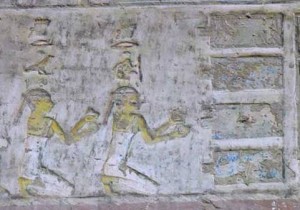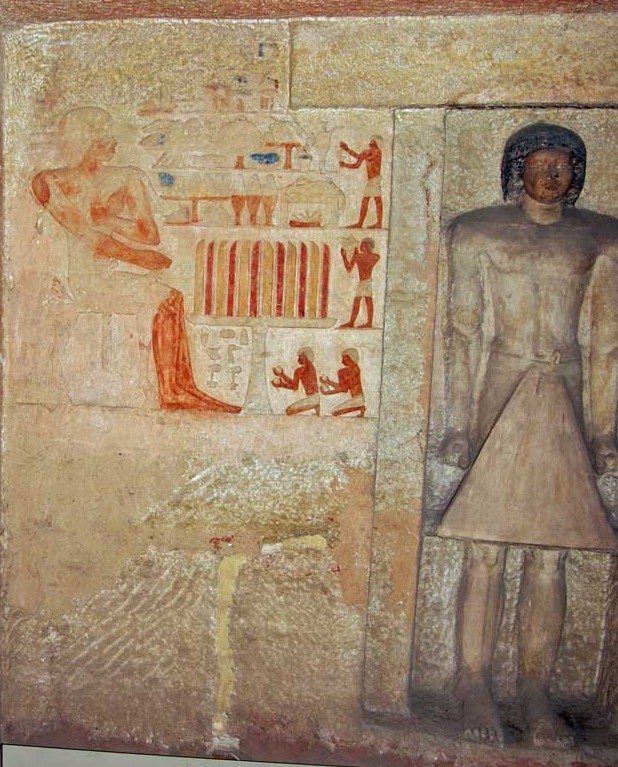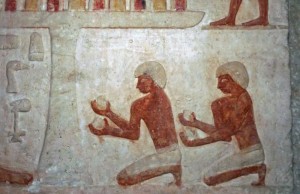In Ancient Egypt a couple of two professional women in the role of Isis and Nephthys were actively involved in the dead’s resurrection.
They appear usually at both ends of the coffin, during the Opening of the Mouth Ceremony or, from the New Kingdom, kneeling and offering two globular vases nw at the end of that funerary ceremony.

The two professional mourners offering the nw vases at the end of the Opening of the Mouth Ceremony. Tomb of Pahery. Photo: ww.osirisnet.net
At the beginning we thought that this scene of the professional mourners offering the vases nw was something exclusive of the New Kingdom and of the Theban area. However we were maybe wrong; Ancient Egypt reveals always something new.
In some tombs from the Old Kingdom and from the Memphite area the artists of Ancient Egypt included an iconography, which remembers that one from later periods and from the south.
That is the case of the tomb of Iasen in Gizah (G2196) from the Old Kingdom. In the funerary chapel, to the left of the niche with the statue of the deceased, there is an image of Iasen seated and facing the offering table. Underneath two unidentified kneeling men are facing the dead and offering nw vases. Their position clearly reminds the one of the two professional mourners at the end of the Opening of the Mouth Ceremony, which will become so common during the New Kingdom.

Funerary chapel of Iasen in Giza. Front view with statue. Photo: www.osirisnet.net
In the tomb of Iasen there is no text related to these two men, so it remains unclear what they are doing. In any case, the Art of Ancient Egypt is not gratuitous, neither the scenes nor their location. So, we have to make some reflections with the basis of three elements:
The scene belongs to the final of the funerary ceremony. That is, when the deceased is reborn after the reviving rites; he seats in front of the offering table in the verge between the Hereafter and the table with the funerary offerings.
The scene is located in the funerary chapel, next to the image of the deceased. The rites for recovering the mummy took place presumably into the tomb, and concretely in the chapel. So, we could be facing a summarised version of the reviving rites, that is, an allusion to the Opening of the Mouth Ceremony.
The lack of text could be linked with the codification of some information so typical in the art of Ancient Egypt. Let’s remember here our post about the codified scene of the two mourners in the mastaba of Qar . The proposal would not be so crazy, taking into consideration that the Opening of The Mouth Ceremony was a secret ritual

Funerary chapel of Iasen. Detail of the two kneeling men. Photo: www.osirisnet.net
Summing up, the two kneeling figures at the end of the funerary ceremony would not be a typical scene from the New Kingdom, but it was already from the Old Kingdom in the iconographical corpus of Ancient Egypt.
The question now is: why two men instead two women? Were they in charge of a mourning ritual?